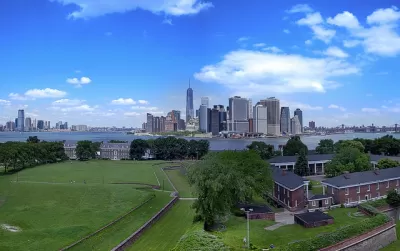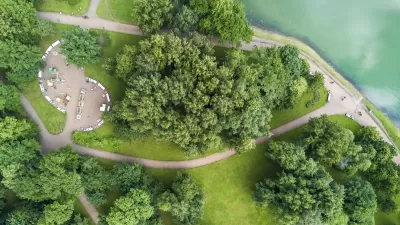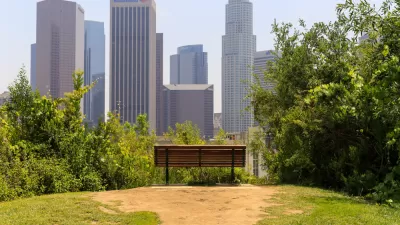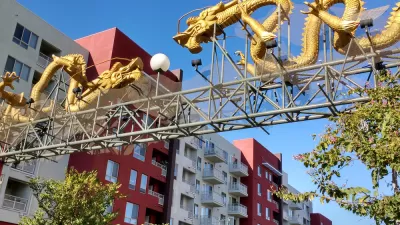A new report by the Center for an Urban Future signals the need for attention to the Big Apple's parks before they are beyond repair.

The Center for an Urban Future released a report on New York City's public parks this week, capturing the attention of multiple media outlets in the process of telling the story of an aging and neglected parks portfolio.
The report, titled "A New Leaf: Revitalizing New York City's Aging Parks Infrastructure," was funded by the Stavros Niarchos Foundation. According to the website for the report, A New Leaf "offers a new level of detail about the infrastructure needs of New York City’s parks—including invisible infrastructure, pathways, built facilities, and landscape—and encompasses both well-known facilities like playgrounds and bathrooms, and lesser-recognized yet integral components, such as drainage systems and retaining walls."
The report also produces more than a 20 recommendations, focusing on issues of financing, maintenance, planning, and construction.
For insight into the media reaction to the report, read the following news stories written since the report's release.
- Inside NYC’s $6 billion parks problem (The New York Post)
- New York City Parks Are In Desperate Need Of Repairs, Study Finds (CBS New York)
- New York City parks hobbled by age, underinvestment according to new report (The Architect's Newspaper)
Eli Dvorkin, managing editor of the Center for an Urban Future, also penned an op-ed for the Gotham Gazette to make the case for a concerted revitalization effort for the city's parks.
FULL STORY: A New Leaf: Revitalizing New York City's Aging Parks Infrastructure

Alabama: Trump Terminates Settlements for Black Communities Harmed By Raw Sewage
Trump deemed the landmark civil rights agreement “illegal DEI and environmental justice policy.”

Planetizen Federal Action Tracker
A weekly monitor of how Trump’s orders and actions are impacting planners and planning in America.

The 120 Year Old Tiny Home Villages That Sheltered San Francisco’s Earthquake Refugees
More than a century ago, San Francisco mobilized to house thousands of residents displaced by the 1906 earthquake. Could their strategy offer a model for the present?

LA’s Tree Emergency Goes Beyond Vandalism
After a vandal destroyed dozens of downtown LA trees, Mayor Karen Bass vowed to replace them. Days later, she slashed the city’s tree budget.

Sacramento Leads Nation With Bus-Mounted Bike Lane Enforcement Cameras
The city is the first to use its bus-mounted traffic enforcement system to cite drivers who park or drive in bike lanes.

Seattle Voters Approve Social Housing Referendum
Voters approved a corporate tax to fund the city’s housing authority despite an opposition campaign funded by Amazon and Microsoft.
Urban Design for Planners 1: Software Tools
This six-course series explores essential urban design concepts using open source software and equips planners with the tools they need to participate fully in the urban design process.
Planning for Universal Design
Learn the tools for implementing Universal Design in planning regulations.
Ada County Highway District
Clanton & Associates, Inc.
Jessamine County Fiscal Court
Institute for Housing and Urban Development Studies (IHS)
City of Grandview
Harvard GSD Executive Education
Toledo-Lucas County Plan Commissions
Salt Lake City
NYU Wagner Graduate School of Public Service





























